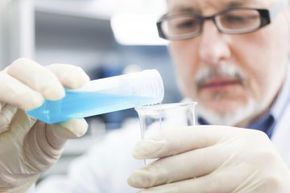Clinical trials are studies designed to test the benefits and side effects of experimental therapies such as potential drugs, products or treatments on people. It's estimated there are about 50,000 clinical trials taking place at any given time worldwide. And every year, 10 million healthy people are needed as participants in these medical studies in just the U.S. alone [sources: McHugh, Abboud]. These types of studies are often sponsored by pharmaceutical companies, but may also be funded through academic institutions, such as teaching hospitals, or government agencies, such as the National Institutes of Health. Clinical trials are usually carried out by teams of doctors, nurses and other health care professionals at hospitals or health centers, inside research centers, at universities, or even conducted through your doctor's office.
Before a human trial can be conducted, though, lab experiments first take place in animals and in human cells. If the results of those studies are promising, a written plan called a protocol is designed by clinical research specialists and statisticians, and reviewed and monitored by an Institutional Review Board (IRB) to ensure the study is both ethically and scientifically sound (both in concept and in execution) and protects participants.
Advertisement
But it wasn't always so. It wasn't until the 1962 Drug Amendments were passed that the U.S. Food and Drug Administration (FDA) gained authority to regulate and approve drugs in the United States. Prior to FDA regulation, in fact prior to modern evidence-based medical practices, there were no clinical trials. Early medical studies were more like trial and error. Consider it more like observation than anything else. On top of that, participants weren't necessarily volunteers, or if they did volunteer, the odds weren't good they were told what they were really signing themselves up for.
By the beginning of the 20th century, as many as 92 percent of drugs sold in the U.S. were fraudulent, ineffective, unproven or unsafe. Because of the risks associated with what some call "snake oil" treatments, in 1905 the American Medical Association announced a drug certification program and seal of approval for drugs that had been evaluated for quality control and safety [source: FDA]. Still, it wasn't common to conduct any pre-market safety or efficacy evaluation on experimental (or any, for that matter) drugs before the U.S. Food, Drug and Cosmetic Act of 1938 went into effect. It wouldn't be until after WWII when biomedical and clinical research projects became well-funded and the National Institutes of Health opened that statistically-based studies became the new standard in clinical trials.
Today the FDA regulates clinical trials for biologics (those are such things as vaccinations or gene therapy), drugs, and medical device products; any studies that fall outside of the FDA's authority are overseen by the organization (such as a research center) conducting the study.
Before we talk about the people who participate in clinical trials, how they're recruited and how much they're compensated, let's look at the basics of what clinical trials are and what happens during these studies.
Advertisement



